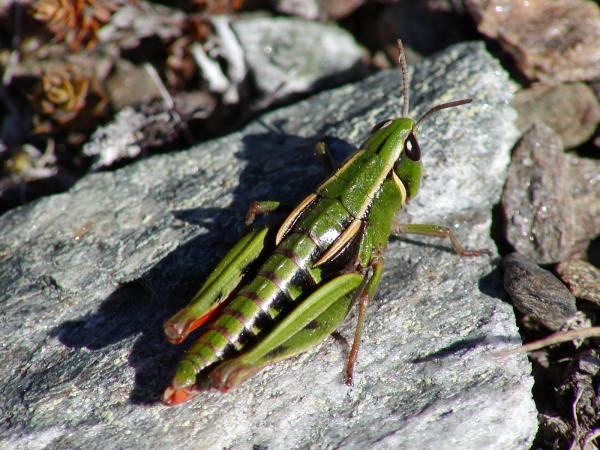Facts About Alpinacris tumidicauda
Alpinacris tumidicauda: The Alpine Grasshopper of New Zealand
Introduction:
Alpinacris tumidicauda is a distinctive species of grasshopper found exclusively in Otago and Southland, New Zealand. This captivating insect belongs to the genus Alpinacris, which is endemic to New Zealand's South Island. The species was first described in 1967 by entomologist Robert Sidney Bigelow, who identified its type locality at Obelisk in the Old Man Range.
Life Cycle:
The life cycle of A. tumidicauda is remarkably intriguing, spanning either two or three years. An interesting aspect of its life cycle is that the eggs must "overwinter" meaning they require a cold period before hatching. Adult grasshoppers are typically active from December to April, coinciding with New Zealand's summer season.
Habitat:
This grasshopper thrives in alpine tussock grasslands at elevations ranging from 700 to 1,700 meters. It can be found in various locales, from Cleughearn Peak to Mount Aurum. In Fiordland, A. tumidicauda is one of only three known alpine grasshopper species.
Relationship with Sister Species:
A. tumidicauda has a close relative, Alpinacris crassicauda. The two species evolved separately due to the geographical barrier created by the Alpine Fault.
Physical Characteristics:
This grasshopper is flightless, with males measuring between 12 and 14 mm and females between 21 and 24 mm in body length. A. tumidicauda exhibits four distinct color morphs: green, olive, dark olive, and yellow-brown, with the green morph being the most common.
Type Information:
The original description of A. tumidicauda by Bigelow includes detailed information about the type locality and the type specimen. The holotype and paratype specimens are preserved in the Canterbury Museum in Christchurch.
